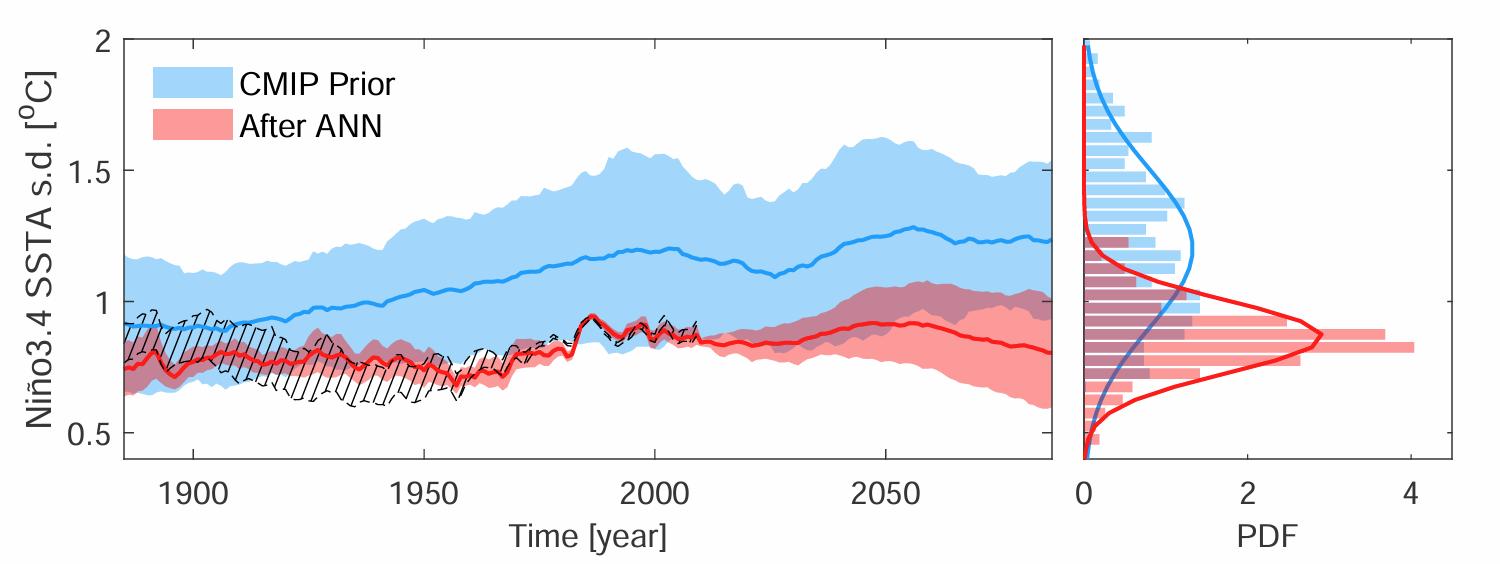El Niño-Southern Oscillation (ENSO) is the strongest interannual variability signal in Earth's climate system. The shifts between its warm and cold phases profoundly impact global extreme weather, ecosystems, and economic development. However, current climate models show large discrepancies in their future projections of ENSO sea surface temperature (SST) variability.
To address this issue, a research team led by Prof. WANG Fan from the Institute of Oceanology of the Chinese Academy of Sciences (IOCAS) pointed out that deep learning can reduce ENSO projection uncertainty and enable more reliable future climate projections. Their findings were recently published in Nature Communications.
The researchers developed an "observation-informed" deep learning approach by training 11 independent Artificial Neural Network (ANN) models. These models used both historical and future scenario data from various Coupled Model Intercomparison Project 6 (CMIP6) climate models to capture the complex relationship between ENSO variability and the mean state of tropical Pacific SST within each model.
Furthermore, the researchers incorporated real observational data to validate the ANNs, prioritizing models that accurately reflected the observed ENSO response to SST changes. Through interpretability analysis and examination of ENSO physical mechanisms, the study found that the best-performing ANNs effectively internalized realistic ENSO dynamics. These models exhibited strong sensitivity to SST changes in the central equatorial and far western Pacific, aligning with established key feedback regions for ENSO.
Using the ANNs for constrained projections of 21st-century ENSO SST variability under a high-emission scenario, the team discovered that the range of predictive uncertainty was reduced by 54% compared to the raw CMIP model projections.
Moreover, although traditional analyses suggest significant differences between observations and models regarding the 20th-century tropical Pacific warming pattern, when focusing on the key regions for controlling ENSO variability identified by deep learning, both observational data and climate model simulations consistently showed a similar "El Niño-like" warming pattern.
"This study provides a quantifiable physical basis for future ENSO projections," said Prof. ZHU Yuchao, the first author of the study.

Reduced uncertainty in ENSO SST amplitude projections using deep learning. (Image by IOCAS)






